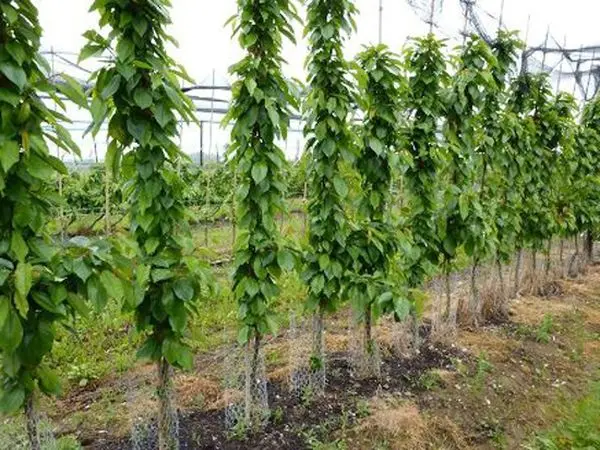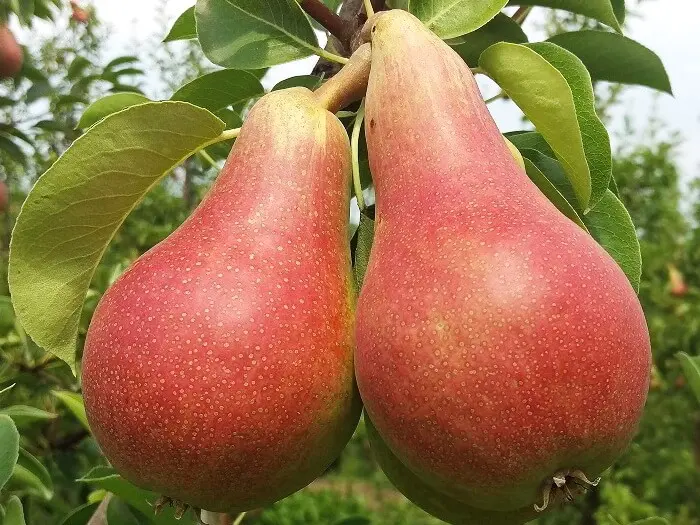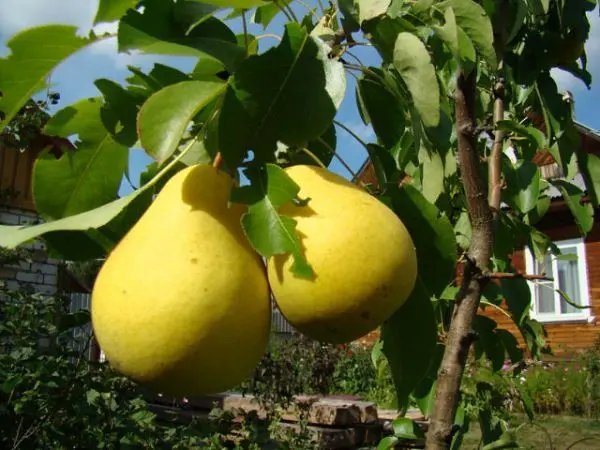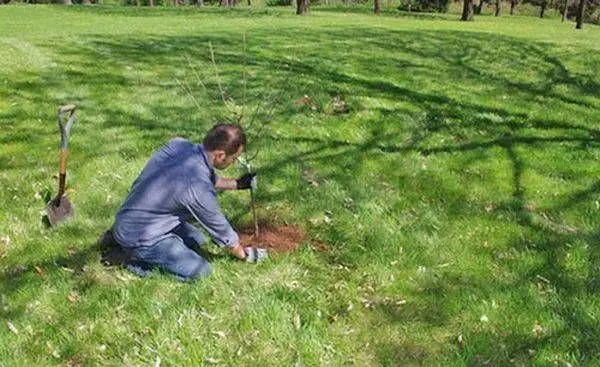Contents
Summer residents prefer to plant various fruit trees in their gardens. The columnar pear is especially popular today. What you need to know about this crop for growing in the garden will be described below.
General description of columnar pears

The columnar variety of pears has two striking features: compact size and high fertility. In height, such trees can grow up to 2 m. The trunk of the plant is larger than that of ordinary trees of this fruit crop. Fruiting occurs along the trunk.
The description of the fruit directly depends on the variety of pear. The fruits are usually large in size and have a typical taste. Fruit ripening times vary. There are summer and winter varieties. The average yield per tree is 3–8 kg.
Video “How to prune columnar trees”
In this video, you will learn how to properly prune columnar trees.
Varieties
The most popular among gardeners are the following varieties of columnar pears:
- Sapphire. Fruiting begins at 3 years. The fruits ripen in September. The fruits are elongated and pink-green in color. Their average weight is 250 g;
- Pavlovskaya. Harvest appears on the 2nd year. Fruit picking – in October. Pears are large, juicy and sweet. Their skin is thin. It is colored yellow-pink;
- Carmen. The harvest takes place in the summer. The peel of pears is bright burgundy. The fruits themselves are large. They weigh about 300 g. The fruit tastes very sweet;
- Delight. The crop is removed as it ripens. The fruits weigh about 100–160 g. Pears smell good and are very tasty. Their peel has an uneven yellow color. Small dots are often present on its surface;
- Honey. Fruit ripening occurs in mid-August. Pears yellow-green. The fruits are very large and can weigh about 400 g. The pulp is juicy and sweet, has a light pleasant aroma;
- Decor. The crop ripens in late summer and early autumn. Fruiting begins at the 2nd year of the tree’s life. Fruit oval, yellow.

“Tenderness” also belongs to the columnar varieties. Refers to autumn varieties. Pears weighing up to 150 g are formed on the tree. They are ovoid in shape and have a green peel. The variety is characterized by very juicy and tender fruits. Their taste is sour.
This is not a complete list of columnar pear species.

Advantages and disadvantages
Columnar varieties have the following advantages:
- take up little space in the garden;
- many species begin to bear fruit already in the second year after planting;
- a huge range of varieties. You can choose a variety for specific climatic conditions;
- high transportability of fruits;
- crop is easy to harvest;
- high fertility of trees.
Thanks to these qualities, columnar varieties have many positive reviews. In addition to the above advantages, such a pear has a number of disadvantages:
- Short lifespan of trees. If the care of the plant is correct, then the pear will live for about 10 years.
- Seedlings are demanding to care. To obtain abundant fruiting, certain agricultural practices must be observed.
Features of agricultural technology
Planting a columnar pear is carried out in pits 50 cm wide and 80 cm deep. Seedlings should be planted in April-May or September-October. Trees are usually planted in one lane. But if the size of the garden allows, it is allowed to organize two lanes.
After planting, the roots of the plant remain near the surface. Therefore, loosening and weeding of the near-stem circle are carried out very carefully so as not to damage the root system.
After planting, seedlings must be properly cared for. Watering is carried out 3-4 times a week in the morning. 5–8 liters of water is poured under one tree. Waterlogging of the soil leads to rotting of the roots.
The first feeding is carried out before the leaves appear. Organic fertilizers should be used carefully.
Due to the high growth rate, pruning of trees is mandatory. With proper formation, pears grow by 10-12 cm per year. They also have 3-4 new branches.
In the first year, all the flowers that appear are cut off. This will allow the seedling to take root better in a new place. The next year, you can leave 4-5 fruits.
Despite frost resistance, pears should be covered for the winter. It is especially important to perform this procedure in the first year after planting. Shelter is formed after the first frost. Plants are protected from frost with straw, spruce branches and non-woven textiles. When constructing protection, it is necessary to ensure that mice and other rodents do not get inside. Humidity should not be allowed inside the shelter, otherwise the process of decay will begin.

Nuances of pollination
Almost all varieties of columnar pears are self-fertile. For the formation of the crop, they need the presence of pollinating trees near them. The best pollinators are:
- Bere Bosk;
- duchess;
- Favorite Yakovlev and others.
It is necessary to choose a pollinator for each specific variety. Both trees should bloom at the same time.
Reviews of gardeners
Maria, 35 years old: “A couple of years ago, my husband and I bought three different seedlings of a columnar pear. During the first year, they were plentifully watered and fed. The next year we already got a small harvest. Every year there are more fruits. Very happy with the purchase.”
Alexander Nikiforovich, 50 years old: “I have been breeding columnar pears for many years. Of all the species, Sapphire and Honey are the most beloved. Of course, it takes a lot of fiddling with the trees, but the tasty harvest is worth it.”









